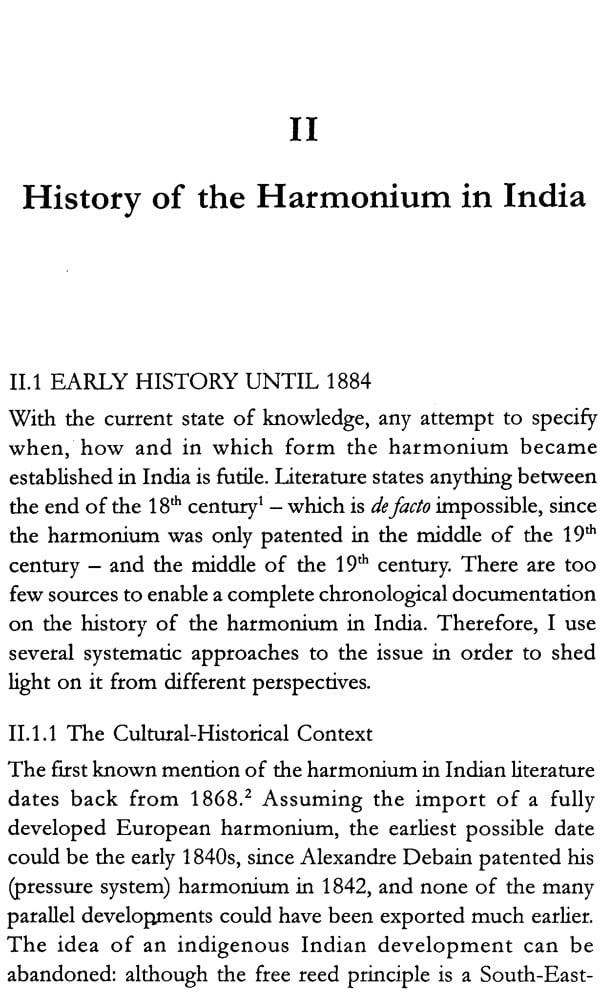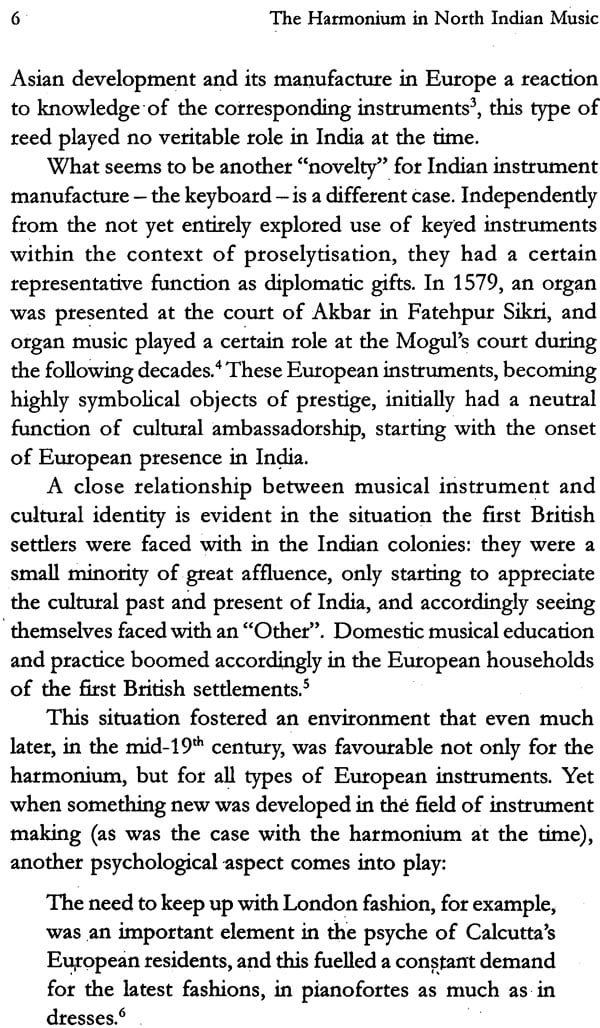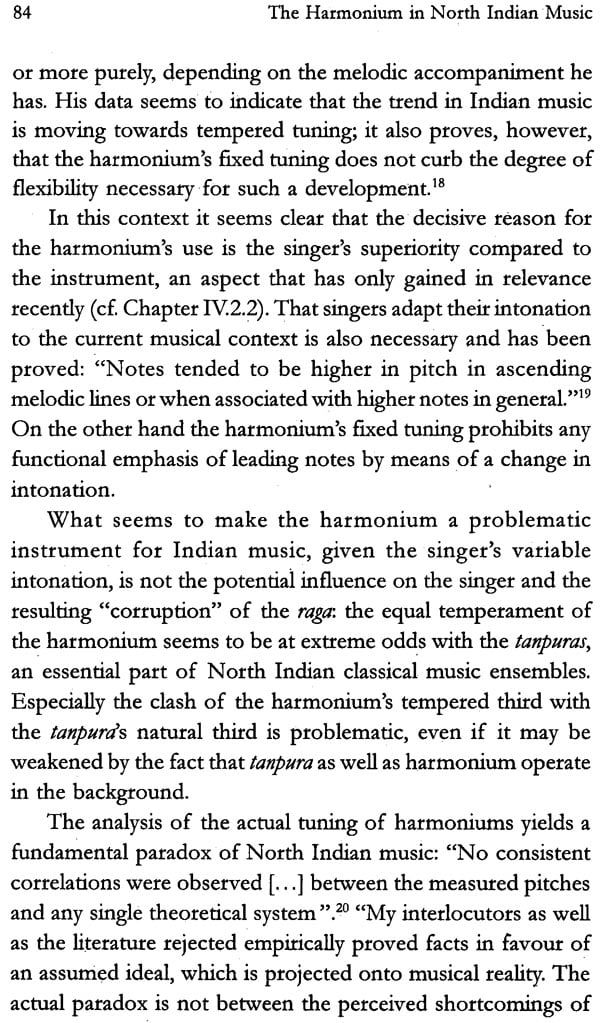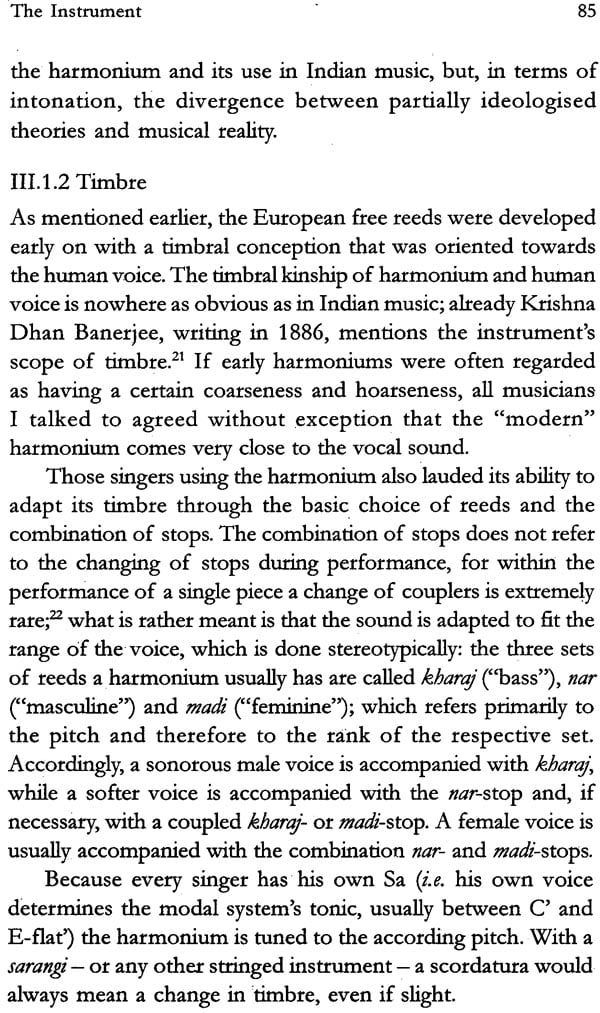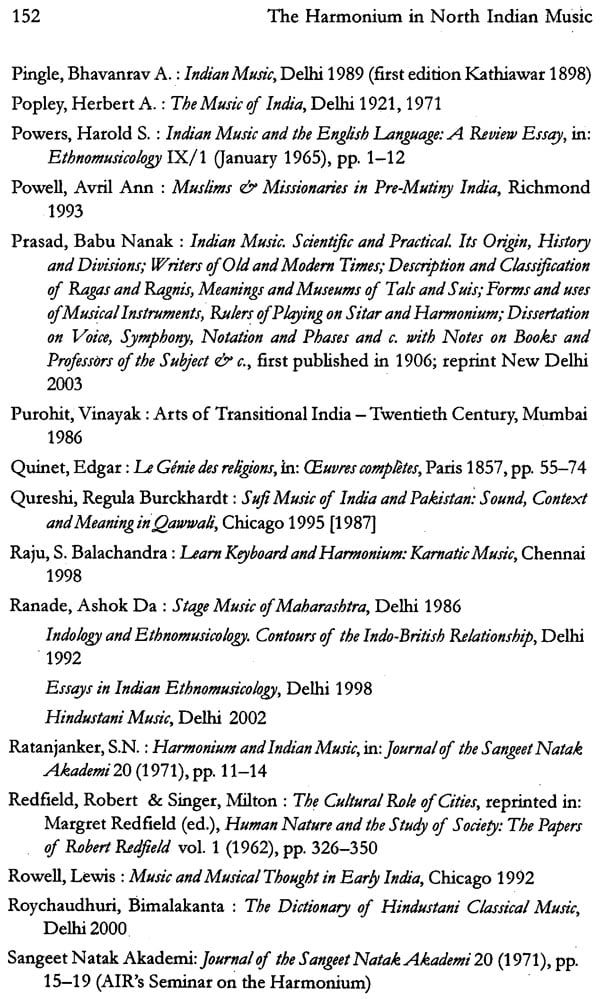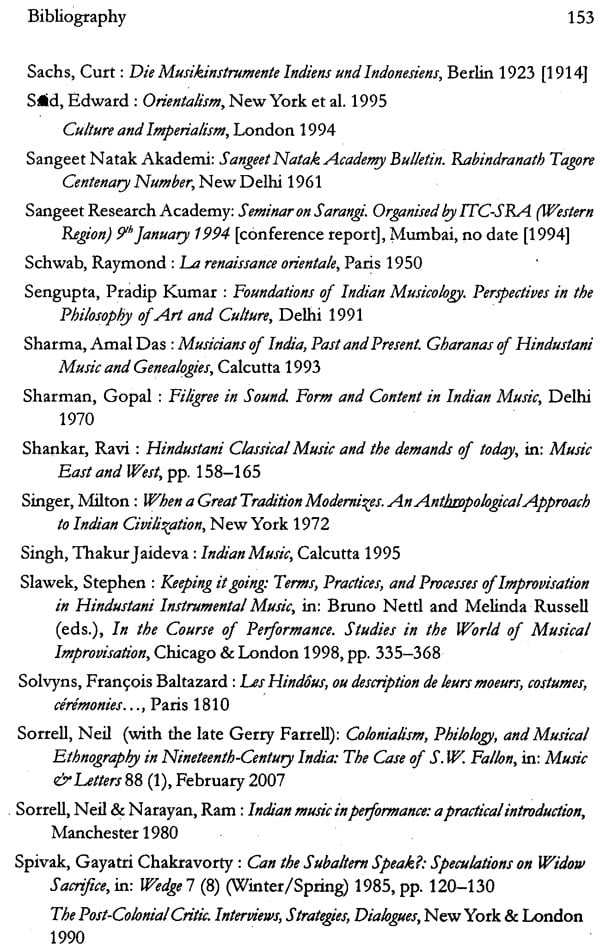
The Harmonium in North Indian Music
Book Specification
| Item Code: | NAF351 |
| Author: | Birgit Abels |
| Publisher: | New Age Books |
| Language: | English |
| Edition: | 2010 |
| ISBN: | 9788178223094 |
| Pages: | 164 (15 B/W Illustrations) |
| Cover: | Paperback |
| Other Details | 8.5 Inch x 5.5 Inch |
| Weight | 240 gm |
Book Description
The harmonium holds ambiguous reputation in India as well as in its “home continent” of Europe. There is an abundance of clear statements made by distinguished Indian musicians, theoreticians and also politics who time and again would decry the instrument. Rabindranath Tagore’s famous description of the harmonium as “that bane of Indian Music” is just one example. And yet, the harmonium is agrubly the instruments the instrument most widely used for accompanying the foremost medium of North Indian classical music, i.e. the human voice. Thus, by all appearances the anxiety about the harmonium’s potentiallt destructive impingement on traditional music is not shared by the majority of the musicians.
The book seeks to understand the complex history of the harmonium on North India, analyse the apparent conflict between musical theory and practice and describe how the instrument is used in musical practice. Is the harmonium and instrument suitable for Indian music? Can it live up to the requirement suitable for Indian music? These questions pervade the whole book, at the end of which, they will appear in a whole new light.
Birgit Abels is an ethnomusicologist and currently an affiliated fellow at the International Institute for Asian Studies (IIAS) in Leiden, Netherlends. She is a fellow of the Netherlands Organisation for Scientific Research (NOW) and a former fellow of the German National Acadamic Foundation. She received her PhD from Ruhr University Bochum (Germany). After studying Music and Islamic Studies at the School of Oriental and African Studies (SOAS), London (UK), she obtained her MA in Musicology and Oriental Studies from Ruhr University. She has done ethno musicological fieldwork in India and Palau, and Published on the music of both countries.
In the sphere of Indian Classical music, hardly any instrument offers as much potential for dispute as the harmonium: it is unable to be tuned properly ornaments essential for the performance of ragas are beyond its capabilities, and it is an imported instruments and aspect, however which has lost its significance over the years. Yet the majority of vocalists using the harmonium for melodic accompaniment shrug off these arguments, put forward by those who reject the harmonium. The harmonium’s decisive advantages for musicians lie in the specific, vocal-like timbre of the free reeds, its volume, and especially it’s practically: contrary to the Sarangi no extensive tuning is required, the tuning is robust enough to withstand any changes of climate, it is easily transportable and can adapt to the singer’s voice to a certain degree.
There is, however, general disagreement on whether Indian music can be performed on the instrument, and public interest I the debate is accordingly intense as the controversially written articles and discussions in newspapers prove to this day. He matter has evaded scientific scrutiny until now, apart from a few magazine articles surprisingly insofar as the subject displays many facets and touches on issues of Indian music: the tuning issue, the definition of the raga, the importance of ornamentation and the relationship between Indian classical music and musical change in India. An investigation of the harmonium in India could therefore throw light upon aspects of these important issues.
Because an investigation of the harmonium touches upon basic principles of the Indian musical system, this study will also investigate musical and social aspects concerning the harmonium; technical details comparing the Indian harmonium to its European counterparts and ancestors will mostly stay in the background.
Furthermore, this investigation focuses in “North Indian classical music” in a broad sense. This geographic Limitation of the subject takes into account the fact the southern India has an independent and autonomous musical system, an investigation of which would go beyond the scope of this study. “Classical” means that his classical and semi-classical genres of kbyal and thumri are the subjects of examination these are the genres relying heavily on the use of the harmonium, and they are also subject to fundamental theoretical qualitative postulates of classical music. The harmonium, therefore, assumes a particularly controversial role within these genres, making them all the more interesting as a focal point for an investigation of this kind.
The central question this publication seeks to answer is why, of all instruments the harmonium managed to proliferate this way, making it indispensable to the modern music and concert scene. This study is divided into two sections the first is historical in nature, looking the spread of the harmonium in India and analyzing the dispute between the harmonium’s advocated and their opponents within their context.
The first part examines primary and secondary sources, historic recordings and information gathered during field research in India. The latter is also examined in the second section, which analyses the musical role the harmonium plays.
The harmonium is also played as a solo instrument, but this genre is largely an area of research in itself, and can only be looked at cursorily. It is a genre with a low profile in current public concert life, therefore this limitation does not distort the investigation.
The analysis of the harmonium’s accompaniment function looks at strategies that musicians apply to compensate for the acknowledged limitation of their instruments. Closely related to this the question of how the role of a melodic instrument accompanying a singer is defined, which has been investigated (albeit not published) and to which this publication provides a few additional answers.
| Achnowledgements | vii | |
| List of Illustrations | ix | |
| I | Introduction | 1 |
| II | History of the Harmonium in India | 5 |
| II.1 | Early history until 1884 | 5 |
| II.1.1 | The Cultural Historical Context | 5 |
| II.1.2 | The Spatial Context | 12 |
| II.1.3 | The Spreading of the Harmonium | 19 |
| II.2 | After 1884: the Indian Harmonium Excursion Harmonium | 26 |
| II.3 | For and against the Harmonium Public Opinion | 36 | td>
| II.3.1 | The discussion until 1940 | 36 |
| A.H. Fox Strangways | 41 | |
| Margaret Cousins | 45 | |
| Earnest clements | 48 | |
| II.3.2 | After 1940 | 56 |
| The A.I.R. ban | 58 | |
| III | The Instrument | 79 |
| III.1 | Tunning | 79 |
| III.1.1 | Menasurements, tuning, intonation | 82 |
| III.1.2 | Timbre | 85 |
| Excursion Volume | 86 | |
| IV | Musical Use | 91 |
| IV.1 | The harmonium as also intrument | 92 |
| Direct comparison: harmonium solo, vacal solo | 93 | |
| IV.2 | The harmonium accompanying vocals | 99 |
| IV.2.1 | Ornaments | 100 |
| IV.2.1.a | Gameka | 101 |
| IV.2.1.b | Anodaln | 103 |
| IV.2.1.c | Mind | 104 |
| IV.2.1.d | Other techiques | 106 |
| Non termpered intervals | 106 | |
| Excursus multi pitch sounds and chors | 106 | |
| Varried bellows pressure | 107 | |
| IV.2.2 | The relation ship Between vocal soloist anad harmonium | |
| Accompainsed | ||
| V | The Future | 119 |
| Appendix | 131 | |
| Glasary | 141 | |
| Bibliography | 145 |
